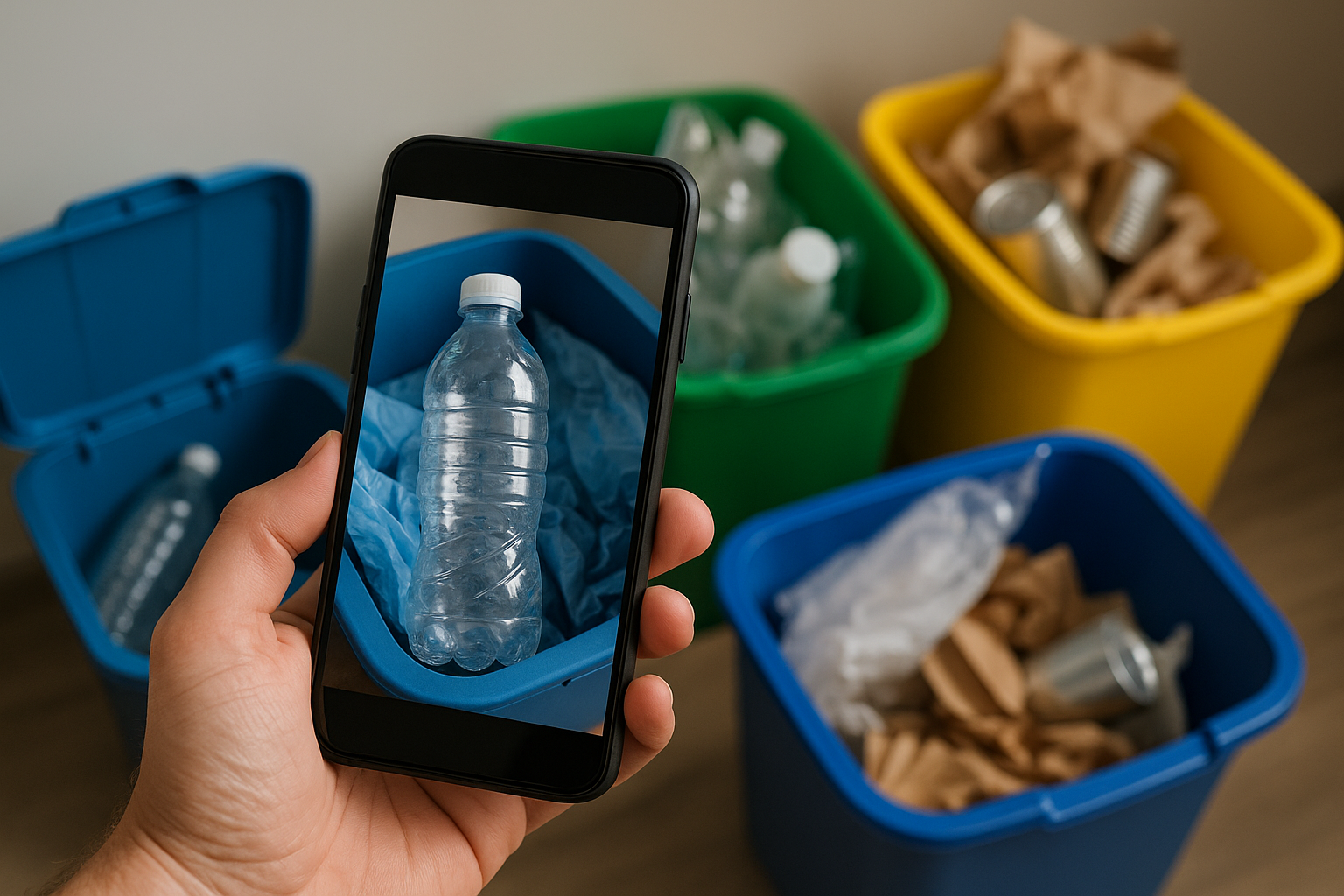Sustainable AI hits the bin: Optimized models enable instant waste recognition
The study addresses a common challenge in sustainable waste management: real-time classification of household waste under unpredictable visual conditions and hardware limitations. The research team developed a dataset comprising 27,396 images across seven waste categories tailored to Spain’s recycling framework, ranging from paper and plastics to pharmaceutical and organic waste. The dataset integrates open-source images from multiple domains and features varied lighting, background clutter, and object heterogeneity to simulate real-world disposal scenarios.

Global waste volumes continue to climb, yet recycling systems remain inefficient, driven by slow sorting, material contamination, and lack of real-time intelligence. A new AI-based solution now aims to change that. A new study titled “AI for Sustainable Recycling: Efficient Model Optimization for Waste Classification Systems”, published in Sensors, presents a fully optimized, low-latency machine learning framework designed for real-world deployment in mobile, edge, and cloud-based recycling applications.
The study, led by researchers from the Universitat Politècnica de València and other Spanish institutions, introduces a highly diverse waste dataset and explores quantized deep learning models, especially the YOLOv11 architecture, for fast, accurate classification on resource-constrained devices.
Their findings not only advance sustainable recycling technologies but also bridge critical gaps in environmental intelligence, data-informed waste management, and citizen engagement at scale.
Can lightweight AI models sort trash as accurately as full-sized systems?
The study addresses a common challenge in sustainable waste management: real-time classification of household waste under unpredictable visual conditions and hardware limitations. The research team developed a dataset comprising 27,396 images across seven waste categories tailored to Spain’s recycling framework, ranging from paper and plastics to pharmaceutical and organic waste. The dataset integrates open-source images from multiple domains and features varied lighting, background clutter, and object heterogeneity to simulate real-world disposal scenarios.
To classify these images, the team evaluated 20 deep learning models, including variants of EfficientNet, InceptionV3, MobileNetV3, and the YOLOv11 family, under two conditions: full precision and post-training quantization. Quantization compresses model weights into 8-bit integers, drastically reducing inference time and memory footprint. Among the quantized models, YOLOv11n achieved 92.2% accuracy with just 1.7 MB of memory and a processing time of 21 milliseconds, making it the most efficient performer. While larger models like YOLOv11x scored slightly higher (94.8% F1), they demanded significantly more computational resources.
The research confirmed that even small, compressed models can retain strong performance. This is particularly valuable for smart bin deployments, household apps, or low-power IoT devices operating without cloud connectivity.
How does ensemble modeling improve waste sorting in practice?
Beyond testing individual models, the study explored ensemble strategies to enhance prediction robustness. Researchers implemented Ordered Weighted Averaging (OWA), Choquet and Sugeno integrals, and simple aggregation functions (min, max, mean) to combine predictions from multiple quantized classifiers. Aggregation strategies generally outperformed individual models, with OWA-based ensembles achieving up to 95.38% F1 score. However, the accuracy gains were marginal relative to the additional computational load.
To strike a practical balance, the team progressively reduced the ensemble size using an iterative removal strategy that identified minimal model sets with maximum accuracy. While the YOLOv11x individual model outperformed some ensembles, methods like OWA313 combined strong predictive power with reasonable resource consumption.
Importantly, the team validated model deployment on a Raspberry Pi 5, simulating edge AI usage. Even under constrained CPU-only conditions, the best models sustained inference times under 40 ms and high accuracy, confirming the feasibility of portable, real-time recycling assistants.
What’s next for AI-powered recycling in smart cities and rural areas?
To maximize real-world applicability, the study proposes deployment strategies aligned with different connectivity and infrastructure settings. In low-resource or offline environments, compact models like YOLOv11n are ideal for edge inference in smart bins or household devices. A prototype inspired by the team’s prior work on plant disease detection uses a Raspberry Pi with a camera module to deliver real-time guidance without requiring internet access.
For high-accuracy applications, such as public waste collection or urban smart containers, ensemble methods or cloud-assisted models may be preferred despite their higher demands. The study suggests model distillation as a promising path forward, training smaller student models to mimic the behavior of ensemble outputs while drastically reducing inference costs.
The researchers also conducted stress testing under varied lighting conditions. YOLOv11n retained high accuracy across moderate brightness shifts, but showed performance drops under overexposure, indicating a need for preprocessing techniques or HDR-enabled imaging hardware in uncontrolled outdoor environments.
Looking ahead, the team highlights several research directions: real-world deployment in smart bins, integration with sensor networks for bin-level monitoring, testing on hardware accelerators like Google Coral or NVIDIA Jetson, and urban data system alignment.
- FIRST PUBLISHED IN:
- Devdiscourse










